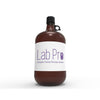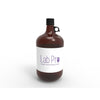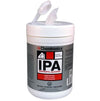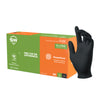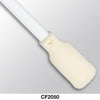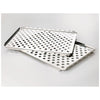- No products in the cart.
Menu
Start typing to see products you are looking for.
Start typing to see products you are looking for.
Browse Categories
-
PPE Apparel
Masks
-
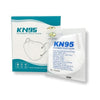 KN95 Respirator Mask, 4 layers, Box of 50 -LP-KN95-001BOX50
$79.00
KN95 Respirator Mask, 4 layers, Box of 50 -LP-KN95-001BOX50
$79.00
-
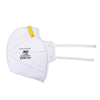 Harley N95 NIOSH Certified Particulate Respirator Mask, Folder Style 20/Box - L-188
$36.00
Harley N95 NIOSH Certified Particulate Respirator Mask, Folder Style 20/Box - L-188
$36.00
-
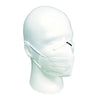 Lab Pro Mask KN95 (K-N95) Pack of 50 - LP-MASK2-K95 - 40% OFF
Lab Pro Mask KN95 (K-N95) Pack of 50 - LP-MASK2-K95 - 40% OFF
$125.00$75.00 -
 Lab Pro 3ply Earloop Disposable Mask (Non-Surgical) (Box of 50) - 84% OFF
Lab Pro 3ply Earloop Disposable Mask (Non-Surgical) (Box of 50) - 84% OFF
$57.00$9.00
-
-
Chemicals
-
Wipes
-
Microscopes and Lighting
-
Hand Tools
Hand Tools
-
Gloves
-
Swabs and Applicators
Foam Tipped Swabs
-
ESD & Static Control
ESD & Static Control
-
Lab Equipment
-
Pipettes
-
Furnaces and Ovens
Furnaces and ovens
-
All Products
- Services New
-
Industries Served
- Brands
- Promotions
-
Information
-
Blog
-
All blogs
- Aerospace
- Calibration of Lab Equipment
- Chemicals and Solvents
- Cleanroom and Critical Environment
- Electric Battery Labs
- ESD Safety
- Lab Consumables
- Lab Glassware and Glassware Equipment
- Lab Pro’s Top 5
- Laboratory Equipment
- Laboratory Safety & Lab Efficiency
- Medical Adhesives
- Medical Device Industry
- Microscopes, Lighting & Inspection
- News
- Our Blog
- Pipettes
- PPE and Safety Apparel
- Press Release
- Science Education
- Solar Energy Labs
- Sustainable & Eco-Conscious Lab
- Swabs
- Tweezers and Cutters
- Ultrasonic Cleaning
- VMI for Lab Supplies
-
All blogs
- Contact
Glossary of Common Chemical Grades
There are many different chemical grading standards. Most laboratory chemicals are labelled with a grade which generally indicates the purity of the chemical. Lab Pro’s glossary of Common Chemical Grades is a comprehensive list of grades that is relevant in chemistry and laboratory use.

ACS
ACS is the highest purity available. It meets or exceeds standards set by the American Chemical Society (ACS). ACS grade chemicals typically are the most expensive, as they come with a certificate of analysis. If you have medicinal, food, and drug applications that have stringent quality specifications, you'll want to use an ACS grade (≥95%) chemical for sure.
Reagent
Reagent chemical grade is appropriate for analytical work. The purity is similarly equal to ACS grade (≥95%) and is more than sufficient for general laboratory use.
USP
USP is used primarily in laboratories. USP is a grade with enough purity to pass specific tests scheduled and prescribed by the US Pharmacopoeia (USP) and is determined acceptable for drug use in some instances.
NF
NF grade contains enough purity to meet the standards required by the National Formulary (NF). However, the grade impurities are still not known, thus making it more commonly used for educational purposes and as an upper-level intermediate quality chemical.
HPLC
HPLC is high-performance liquid chromatography. However, it's a technique used to separate, recognize, and calculate each chemical compound from a mixture.
LP Grade (Low Particulate) Grade
Low Particulate Grade (LP Grade) refers to a low level of particulate matter found in the chemical. This grade is generally used in cleanroom environments.
Laboratory Grade
Laboratory grade has the lowest purity. Its primary use is in educational applications. Laboratory grade isn't able to be used for medical, drug, or any kind of food due to its impurity level.
Pure
Pure is a lower-level intermediate quality. Even though this grade contains some impurities, it is best for educational purposes due to its purity being more than enough.
Technical
Technical is a good-quality grade for industrial use but must be used with caution when substituting for reagent-grade or a lab-grade chemical.
The three most common chemical grades are ACS, Reagent, and Laboratory grade.
- ACS
- Reagent
- Laboratory

When ordering chemicals for your lab:
Before ordering chemicals, follow the below tips to make sure you are ordering the right chemical for the correct use.
Make sure you are buying chemicals from a reputable company.
Make sure the chemical has a certificate of analysis (CofA).
Make sure the chemical has a Safety Data Sheet (SDS).
Make sure you understand the most effective use for the chemical.
Make sure you have a proper waste disposal system for any purchased chemicals.
Make sure you have the proper (temperature) storage available.
The key to ordering chemicals for your lab is to determine and understand the exact needs before making any purchase, please contact Lab Pro at info@labproinc.com or at 888-452-2776 and a lab expert will be happy to help.





